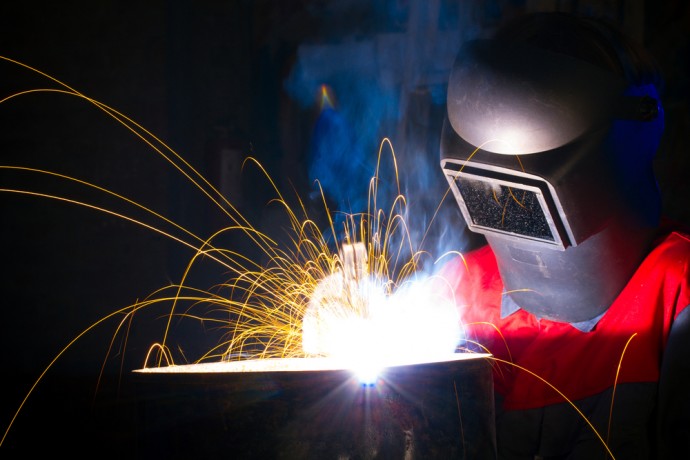Aluminium is a more reactive metal than steel and other metals, and more precision and care when being welded. Before welding aluminium, it is important to know what you are doing before you start, so here are some tips for beginners.

Base Metal Preparation
Aluminium requires preparation before welding can begin. It is important to thoroughly clean the metal of both hydrocarbons and oxides. First start off by degreasing the metal, while making sure not to use any product that has hydrocarbons. Once the metal has been degreased, use a steel wire brush to remove any oxide on the surface. Removing oxidise is really important because aluminium oxide has a melting point of over 2000oC and aluminium has a melting point of 650oC therefore any oxide on the surface will inhibit heat and filler metal penetration into the aluminium. When scrubbing the surface with the wire brush make sure to move in only one direction. Moving in multiple directions can further imbed the oxides into the aluminium. Do not use the same steel brush for aluminium, as steel or any other metal, in order to prevent contamination.
Preheat
Preheating the work piece can help prevent cracking in the welds. When preheating the temperature, you should not exceed 110oC. Make sure you use a temperature indicator to monitor the process and to assist in preventing the metal from over heating. If the process is proving tricky, try using tacking welds to secure your work. Remember to also try and avoid a cold lap when trying to weld a thin sheet to a thicker one.
Technique
Aluminium welding requires a specific technique to achieve clean welds. Try pushing the gun away from the weld puddle, rather than pulling it, as this provides a better cleaning action and reduces weld contamination by improving the shielding gas coverage. Also be mind full of your traveling speed. Hot and fast is best for aluminium welds as, unlike steel, aluminium’s high thermal conductivity, increases the risk of burn-through. Try using a hotter amperage and voltage settings with a faster traveling speed.
Welding Wire
When selecting welding wire for aluminium, look for wire that has a similar melting temperature to the base material. The narrower the welder has the melting range, the easier the welding process will be.
Convex Shaped Welds
Crater cracking is the cause of most failures in aluminium welding. The rate to thermal expansion and then contraction in aluminium, means that crater welds have an increased chance of cracking. The surface of craters contract and tear as they cools. If a crater is concave it becomes weak, but if it is a convex shape, it will compensate for the contraction forces.
Welding aluminium can be tricky, so make sure you have the right tools for the job and that you get professional advice when needed. If you are looking for advice or equipment, check the Australian welding standard and guides and check out WIA (Welding Industries of Australia).
By Grace Patterson

